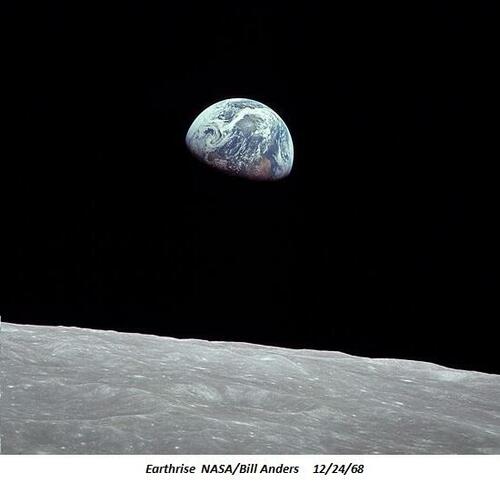Authored by Charles Hugh Smith via OfTwoMinds blog,
From low-Earth orbit, we see only the mighty sprawl of immense power. The internal gearing driving contradictory dynamics is buried beneath the grandeur and the euphoria.
The consensus holds that things are looking up as the mighty forces of technology, political change and the market are all in confluence, reinforcing each other in a New Roaring 20s that will remake America and the world for the better.
The potential is certainly present, and so the question boils down to: is the system that's in place able to accomplish all these transformative changes--including transforming itself along the way? For this is the catch in euphoric expectations--let's call it Catch-20, in a nod to Joseph Heller's Catch-22, in which the request to be relieved of duty due to insanity is proof of sanity.
Catch-20 is the system has to first transform itself as the means to accomplish all the wonderful things, but it's incapable of transforming itself due to the vested interests who will move heaven and earth to keep it locked in its current configuration. The euphoric expectations are based on the belief that the system as it is today is perfectly capable of transforming the economy, society and daily life.
But if we examine the system as a system, stripped of ideology and other belief structures, we find a system of contradictory dynamics that are largely impervious to political change, technology or the market. In other words, the forces that are aligned to transform life have little purchase on the system dynamics that are operating beneath the surface euphoria.
I've presented this list of the dynamics that will shape the next decade to subscribers, with the goal being to elucidate each dynamic in depth as the year unfolds.
In my analysis, these are the engrenages, the gearing that is irreversible due to the design and mechanics of the system. This gearing can be understood as a metaphor for addiction: the system is addicted to its own continuity, yet it's blind to the destructive consequences of this gearing.
Each of these points can be understood as one of the gearings in the machine, a machine as complex as the Antikythera mechanism. Together, these 20 gearings make up Catch-20: the system is incapable of transforming itself, which is the essential first step in transforming the world.
1. The system is optimized for infinite growth / expansion. If expansion falters, the system crashes.
2. The system is optimized for infinite substitution of whatever becomes scarce as the means to continue expanding. Each substitution is inferior / not equivalent to the original resource.
3. These optimizations only function in a narrow envelope. Should the system stray outside this envelope, it crashes.
4. The fundamental principle of the system is "no limits": there are no limits on human ingenuity, and so there are no limits on technology and growth.
5. There are intrinsically contradictory dynamics in the system.
6. Scale and asymmetry are the core contradictory dynamics.
7. The system's optimizations mis-diagnose problems, so it selects "solutions" that accelerate its own dysfunction.
8. The system lacks the means--the values, feedback and institutional structures--to adapt to changing conditions. The solutions offered are based on misdiagnoses of the actual problems, so the problems only become more intractable.
9. As a result, the preferred "solutions" are all forms of play-acting, i.e. the notion that controlling the narrative / framing the "problem" as solvable with existing policies is actually solving the problem.
10. The system's core mythology is Technological Progress is unlimited and unstoppable and so it will solve all problems by its very nature. We can remain comfortably seated and watch as Technology solves whatever problems arise.
11. This belief blinds us to the fact that technology also generates Anti-Progress. Since accepting Anti-Progress undermines our core faith in Technological Progress, we deny the existence of Anti-Progress, just as we deny being addicted. This denial renders us incapable of correctly diagnosing problems and choosing actual solutions rather than play-acting "solutions."
12. Due to these conditions, the system is involuted: no matter what option we choose, nothing changes systemically. Real change is only possible at the micro-level of our own lives, by creating our own adaptable "life-system."
13. Over-Optimization renders the system fragile and vulnerable to breakdown. In our hubris, we believe we control all variables.
14. Cycles of War and Debt Renunciation are aligned and mutually reinforcing.
15. The Logic of Planned Obsolescence and Addiction: these are the drivers of new sales / profits.
16. Jevon's Paradox: new sources of energy are consumed rather than substituted for existing sources.
17. Tacit loyalties / "tribes" that no longer align with traditional political / ideological boundaries are emerging; these are as yet "unbranded" and unrecognized: akin to objects invisible to our eyes because they're radiating infrared energy.
18. Under-competence: we have just enough knowledge / experience to keep the machine running but not enough to rebuild it or adapt it.
19. The critical keystones in the system are not visible until they crumble, bringing down what was presumed to be rock-solid and permanent.
20. The relentless increase in the cost of essentials fuels a decline in the quality of goods and services, to the point that we have lost any sense of quality.
It's not popular to view the system from a great distance.
From low-Earth orbit, we see only the mighty sprawl of immense power. The internal gearing driving contradictory dynamics is buried beneath the grandeur and the euphoria.
* * *
